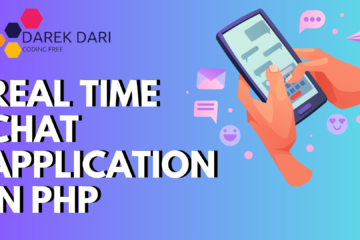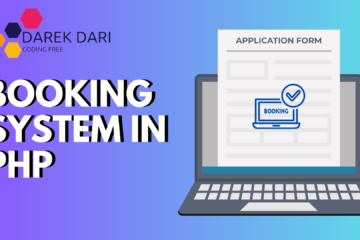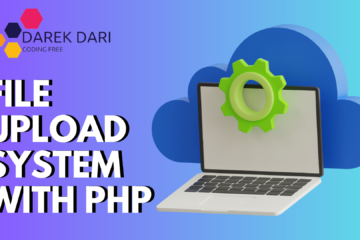
Table of Contents
Introduction to Social Networking Platform with PHP
In today’s digital age, social networking platform play a pivotal role in connecting people, fostering communities, and sharing ideas.
PHP Projects:
- Quiz Application in PHP
- PHP Image Gallery Project Source Code
- Best 200 Questions Game in PHP
- Bulletin Board PHP Project
- Content Management System (CMS) PhP Project
- Event Management System Project in PHP
- Personal Blog with PHP
- Chatbot in PHP
- URL Shortenee in php
Ever wondered how you can create your very own social networking platform from scratch? Look no further!
In this guide, we’ll embark on an exciting journey together, using PHP for the backend magic and React.js for the frontend finesse. Get ready to dive in and unleash your creativity!
Hey there, aspiring developers and digital enthusiasts! Are you ready to dive into the world of social networking? Buckle up, because we’re about to embark on an exhilarating adventure!
In this guide, we’ll walk you through the process of building your own social networking platform, step by step. From user authentication to content sharing, we’ve got you covered. So, grab your favorite coding snack and let’s get started!
Objective
Our mission is clear: to create a dynamic and interactive social networking platform that empowers users to connect, share, and engage with each other in meaningful ways.
Think of it as your own digital playground, where creativity knows no bounds and friendships flourish.
Requirements
To bring our vision to life, we’ll need a set of essential tools and technologies:
- Backend: We’ll harness the power of PHP, particularly the Laravel framework, to build the backend infrastructure of our platform.
- Frontend: For the frontend, we’ll leverage the versatility of React.js to create a responsive and user-friendly interface.
- Key Features: From user authentication and profiles to content sharing and interaction, we’ll implement a range of features to make our platform truly shine.
Backend Magic with PHP
Let’s kick things off by laying down the foundation of our social networking platform with PHP.
To start things off, we’ll establish the groundwork for our social networking platform using PHP.
Our go-to framework for this will be Laravel, a sophisticated and efficient tool that streamlines the development of strong web applications.
We’ll be using Laravel, a powerful and elegant framework that simplifies the process of building robust web applications.
php exercises
php lab exercises
php mvc folder structure best practices
php mvc framework from scratch
php mvc from scratch
php mvc project
php photo database
php photo gallery
php practice exercises
php project source code
php projects source code
php projects with source code github
php realtime chat
User Authentication
User authentication is an essential aspect of every social networking platform. It provides a secure way for users to register, log in, and access their accounts.
To ensure enhanced security, we will be utilizing Laravel’s built-in authentication features and implementing password hashing.
// UserController.php
use App\Models\User;
use Illuminate\Http\Request;
use Illuminate\Support\Facades\Auth;
use Illuminate\Support\Facades\Hash;
class UserController extends Controller
{
// Registration logic
// Login logic
// Logout logic
}User Profiles
User profiles are similar to digital identity cards, enabling users to display their personality, interests, and connections.
With Laravel’s Eloquent ORM, we can easily set up user profiles for viewing and customization.
// ProfileController.php
use App\Models\Profile;
use Illuminate\Http\Request;
use Illuminate\Support\Facades\Auth;
class ProfileController extends Controller
{
// Fetch and display user profile
// Update user profile
}Content Sharing
Sharing content is essential for social networking as it helps users stay engaged and connected.
Our platform will soon have content sharing features that will enable users to create, edit, and delete posts, photos, and videos.
// PostController.php
use App\Models\Post;
use Illuminate\Http\Request;
use Illuminate\Support\Facades\Auth;
class PostController extends Controller
{
// Create new post
// Update post
// Delete post
}photo gallery php
php exercises
php exercises and solutions
php exercises and solutions pdf
php exercises online
php lab exercises
php mvc framework from scratch
php mvc from scratch
Frontend Finesse with React.js
Now that the backend infrastructure is all set up, let’s dive into the frontend and work our magic with React.js.
Prepare yourself to create an interface that is not only visually stunning but also incredibly responsive, leaving users in complete awe!
With the backend infrastructure in place, it’s time to work our magic on the frontend using React.js. Get ready to craft a visually stunning and highly responsive interface that will leave users in awe!
User Authentication
// Login.js
import React, { useState } from 'react';
import axios from 'axios';
const Login = () => {
// Login logic
}User Profiles
// Profile.js
import React, { useEffect, useState } from 'react';
import axios from 'axios';
const Profile = ({ userId }) => {
// Profile logic
}Content Sharing
// CreatePost.js
import React, { useState } from 'react';
import axios from 'axios';
const CreatePost = () => {
// Post creation logic
}How to link social media in PHP?
Integrating social media in PHP usually requires connecting with social media APIs to carry out tasks like sharing content, retrieving user information, or logging in through social media accounts.
Let me show you a simple illustration of how you can integrate PHP with a social media platform like Facebook.
Step 1: Obtain API Credentials
First, you’ll need to obtain API credentials (such as client ID and client secret) from the social media platform’s developer console. For example, for Facebook, you would create a new Facebook App and obtain the necessary credentials.
Step 2: Install SDK or Use REST API
Next, you can choose to either use an SDK provided by the social media platform or interact directly with its REST API. Using an SDK can simplify the integration process, as it often provides helper functions and handles authentication for you.
Step 3: Authenticate Users
Users can easily authenticate themselves by using their social media accounts. This process usually includes redirecting users to the authentication endpoint of the social media platform.
There, they can log in and grant permission for your application to access their data.
Step 4: Handle Callback and Obtain Access Token
Once users grant permission to your application, the social media platform will redirect them back to your website along with an authorization code.
Your PHP application must then exchange this code for an access token, which will enable it to make API requests on behalf of the user.
Step 5: Make API Requests
After acquiring the access token, you have the ability to send API requests to the social media platform.
This includes fetching user information, sharing content, and carrying out various tasks based on the user’s approved permissions.
Here’s a basic example of how you can authenticate users with Facebook using PHP and the Facebook PHP SDK:
<?php
require 'vendor/autoload.php'; // Include the Facebook PHP SDK
use Facebook\Facebook;
// Initialize the Facebook SDK
$fb = new Facebook([
'app_id' => 'YOUR_APP_ID',
'app_secret' => 'YOUR_APP_SECRET',
'default_graph_version' => 'v12.0', // Adjust version as needed
]);
// Use the Facebook SDK to redirect users to the login URL
$helper = $fb->getRedirectLoginHelper();
$loginUrl = $helper->getLoginUrl('https://example.com/facebook-callback.php', ['email']);
// Redirect users to the login URL
header('Location: ' . $loginUrl);
exit;
?>In this example, make sure to replace ‘YOUR_APP_ID’ and ‘YOUR_APP_SECRET’ with the actual credentials of your Facebook App. The ‘https://example.com/facebook-callback.php’ is the URL where Facebook will redirect users after they log in.
Once users log in and authorize your application, Facebook will redirect them back to the specified callback URL with an authorization code.
You’ll need to handle this callback in the facebook-callback.php file to exchange the code for an access token.
This is a simple example to help you get started. Depending on your needs and the social media platform you’re integrating with, you may have to implement additional functionality and handle more complex scenarios.
Always refer to the documentation provided by the social media platform for detailed instructions on how to integrate with their API.
Which social networking platform?
Oh, the excitement of choosing which social networking platform to integrate with! There are so many popular options available, each with its own unique features and community. Let me introduce you to a few of the most widely used social networking platforms you might consider integrating with:
- Facebook 📘: Facebook is the giant of social media, with billions of users worldwide. Integrating with Facebook opens up endless possibilities, from sharing content to authenticating users with their Facebook accounts.
- Twitter 🐦: When it comes to real-time updates and conversations, Twitter is the go-to platform. Integrating with Twitter allows users to share tweets, follow accounts, and engage with trending topics.
- Instagram 📸: If visual storytelling is your thing, Instagram is the perfect platform for sharing photos and videos. Integrating with Instagram enables users to post content, view feeds, and interact with their followers.
- LinkedIn 💼: For professionals and businesses, LinkedIn is the ultimate networking platform. Integrating with LinkedIn offers opportunities for networking, job postings, and professional development.
- Pinterest 📌: If you’re looking for inspiration, Pinterest is the ideal visual discovery platform. Integrating with Pinterest allows users to pin content, create boards, and explore new ideas.
- Snapchat 👻: Snapchat is famous for its ephemeral messaging and playful filters. Integrating with Snapchat enables users to share snaps, stories, and engage with friends in real-time.
Each social networking platform provides its own set of APIs and features for integration.
The choice ultimately depends on your target audience, the nature of your application, and the specific functionalities you want to implement.
So, choose wisely, adventurer, and may your journey into the realm of social connectivity be filled with excitement and discovery! 🌟
How to get Instagram feed using PHP?
If you want to display an Instagram feed using PHP, you’ll need to utilize Instagram’s Graph API. Here’s a step-by-step guide to help you out:
Firstly, you’ll need to create an Instagram App and acquire the necessary credentials such as Client ID, Client Secret, and Access Token. To do this, simply register your app on the Instagram Developer Platform.
Next, you’ll have to authenticate your app with Instagram and obtain an access token. This can be done by utilizing the OAuth 2.0 authorization flow.
This process involves redirecting users to Instagram’s authorization endpoint, where they will grant your app permission to access their Instagram data.
Once you have obtained an access token, you can make API requests to Instagram’s Graph API. Specifically, you’ll want to make a request to the /me/media endpoint in order to retrieve the user’s media, which includes their feed.
This endpoint will provide you with a list of the user’s media objects, such as photos and videos.
Example Code:
Here’s a basic example of how you can get an Instagram feed using PHP:
<?php
// Instagram API endpoint
$api_url = 'https://graph.instagram.com/me/media';
// Access token obtained after authentication
$access_token = 'YOUR_ACCESS_TOKEN';
// Parameters for the API request
$params = [
'access_token' => $access_token,
'fields' => 'id,media_type,media_url,permalink,timestamp',
'limit' => 10, // Limit the number of media items
];
// Construct the URL with query parameters
$api_url .= '?' . http_build_query($params);
// Make a GET request to the Instagram API
$response = file_get_contents($api_url);
// Decode the JSON response
$data = json_decode($response, true);
// Output the media items
if (isset($data['data'])) {
foreach ($data['data'] as $media) {
echo '<div>';
echo '<img src="' . $media['media_url'] . '" alt="Instagram Media">';
echo '<p><a href="' . $media['permalink'] . '" target="_blank">View on Instagram</a></p>';
echo '</div>';
}
} else {
echo 'Error: Unable to fetch Instagram feed.';
}Replace 'YOUR_ACCESS_TOKEN' with the access token you obtained during the authentication process.
Note:
- Make sure to handle errors and exceptions appropriately, especially when making HTTP requests and parsing JSON responses.
- Instagram’s API has rate limits, so be mindful of the number of requests you make within a certain time period.
- Keep your access token secure and avoid exposing it in client-side code or public repositories.
With this code, you can fetch a user’s Instagram feed and display it on your website or application using PHP.
Remember to follow Instagram’s API usage guidelines and terms of service when integrating with their platform.
How to create Facebook API in PHP?
Creating a Facebook API integration in PHP involves a few steps. Let’s go through them:
Step 1: Set Up a Facebook App
- Go to the Facebook Developers website and log in with your Facebook account.
- Navigate to the “My Apps” section and click on “Create App”.
- Choose a name for your app, select a category, and click on “Create App ID”.
- Follow the prompts to complete the setup process. Make sure to fill in any required fields and configure your app settings as needed.
Step 2: Obtain App Credentials
Once your app is created, Facebook will provide you with an App ID and an App Secret. These credentials will be used to authenticate your app when making API requests.
Step 3: Install Facebook SDK for PHP
You can use the official Facebook SDK for PHP to interact with the Facebook Graph API. You can install it using Composer, the PHP package manager:
composer require facebook/graph-sdkStep 4: Authenticate Your App
You’ll need to authenticate your app with Facebook in order to obtain an access token.
There are different authentication flows you can use, such as the OAuth 2.0 authorization code flow or the OAuth 2.0 client credentials flow, depending on your use case.
Step 5: Make API Requests
Once you have obtained an access token, you can use it to make API requests to the Facebook Graph API. You can fetch data such as user profiles, posts, photos, and more.
Example Code:
Here’s a basic example of how to create a Facebook API integration in PHP using the Facebook SDK:
<?php
// Include the Facebook SDK
require_once __DIR__ . '/vendor/autoload.php';
// Initialize the Facebook SDK with your app credentials
$fb = new Facebook\Facebook([
'app_id' => 'YOUR_APP_ID',
'app_secret' => 'YOUR_APP_SECRET',
'default_graph_version' => 'v12.0', // Adjust version as needed
]);
// Use the Facebook SDK to make API requests
try {
// Specify the API endpoint and parameters
$response = $fb->get('/me', 'ACCESS_TOKEN');
// Get the decoded body of the response
$graphNode = $response->getGraphNode();
// Output user data
echo 'Name: ' . $graphNode['name'] . '<br>';
echo 'Email: ' . $graphNode['email'] . '<br>';
echo 'ID: ' . $graphNode['id'] . '<br>';
} catch(Facebook\Exceptions\FacebookResponseException $e) {
// Handle API errors
echo 'Graph API error: ' . $e->getMessage();
} catch(Facebook\Exceptions\FacebookSDKException $e) {
// Handle SDK errors
echo 'Facebook SDK error: ' . $e->getMessage();
}Replace 'YOUR_APP_ID' and 'YOUR_APP_SECRET' with your actual Facebook App credentials.
This code fetches the profile data of the currently authenticated user using the /me endpoint of the Facebook Graph API.
You’ll need to replace 'ACCESS_TOKEN' with the access token obtained during the authentication process.
Note:
- Be sure to follow Facebook’s Platform Policies and Terms of Service when using the Facebook API.
- Always handle errors and exceptions appropriately when making API requests.
- Keep your app credentials and access tokens secure and avoid exposing them in public repositories or client-side code.
php mvc project source code
php photo database
php photo gallery
php project source code
php projects source code
php projects with source code
php real time application
php real time chat application
php realtime chat
Can I use PHP to create an app?
PHP is a versatile language that can be used to create various types of applications. Here’s how you can make the most of PHP for different purposes:
For web applications: PHP is commonly used to build dynamic and interactive web applications. Frameworks like Laravel, Symfony, or CodeIgniter provide features such as routing, database ORM, authentication, and templating, making the development process easier.
For APIs: PHP can be used to create APIs that offer data and functionality to other applications. Frameworks like Laravel or Slim allow you to build RESTful APIs, making communication between different software systems smoother.
For command-line tools: PHP can create command-line tools to automate tasks, process data, or perform system administration tasks. PHP scripts can run from the command line and interact with the operating system or other software components.
For desktop applications: Although primarily used for web development, PHP can also be used for backend logic in desktop applications.
Tools like PHP-GTK and PHP Desktop enable you to build cross-platform desktop apps using PHP and web technologies.
For CLI scripts: PHP is commonly used to write CLI scripts that handle tasks like data processing, file manipulation, or system administration.
With its built-in functions and libraries, PHP simplifies tasks such as working with files, directories, and databases.
PHP offers flexibility in creating a wide range of applications, from web apps and APIs to command-line tools and desktop applications.
With its extensive ecosystem and libraries, PHP empowers developers to bring their ideas to life across different platforms and use cases.
Conclusion
Excited to dive into the world of creating your own social networking platform? With a mix of PHP skills and React.js know-how, you’re on your way to crafting something truly unique.
Remember, the sky’s the limit when it comes to possibilities, so let your imagination run wild! Whether it’s for friends, colleagues, or a specific community, keep refining and improving your creation. The digital world is eagerly anticipating your masterpiece!
Feeling the thrill of embarking on this coding adventure? Building a social networking platform from the ground up is a challenging task, but armed with the right tools and expertise, you can bring your ideas to life.
If you ever hit a roadblock or need guidance, don’t hesitate to ask for help. Happy coding and let your creativity soar! 🚀🌟




0 Comments